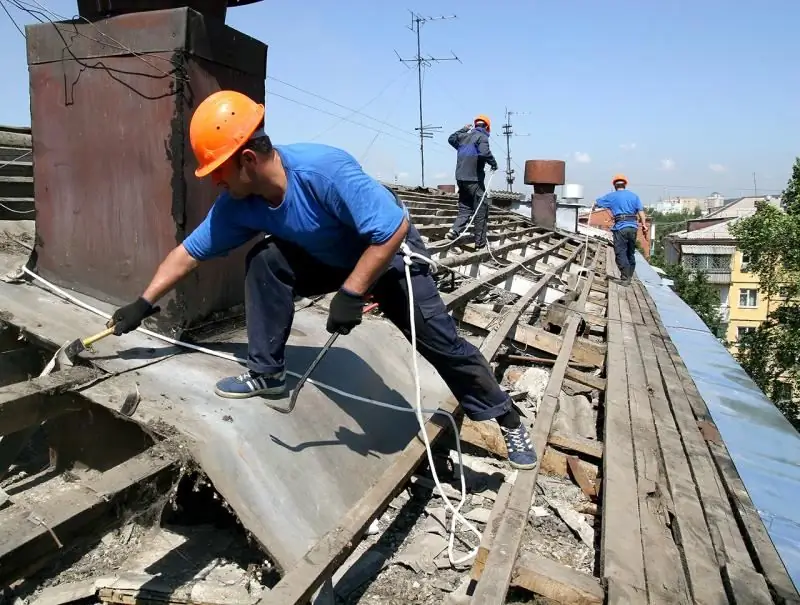
Table of contents:
- Author Bailey Albertson [email protected].
- Public 2023-12-17 12:53.
- Last modified 2025-01-23 12:41.
Do-it-yourself roof repair - types, materials and step-by-step technology

Modern roofing materials used in the construction of roofs of various designs have a long service life. However, despite this, even the most durable coating often needs to be repaired before the expiration of the manufacturer's stated service life. This may be due to both mechanical impact on the roof surface and the conditions of use of the materials used.
Content
-
1 Types of repair work
- 1.1 Overhaul
- 1.2 Maintenance
- 1.3 Late repair
- 2 Materials and equipment for roof repair
-
3 DIY roof repair technology
-
3.1 Repair of soft roofs
3.1.1 Video: repair of a soft roof
-
3.2 Repair of metal roofing
3.2.1 Video: repair of metal roofing
- 3.3 Flat roof repair
-
3.4 Repair of roll roofing
3.4.1 Video: elimination of a swelling defect on a soft roof
- 3.5 Tile roof repair
- 3.6 Glass roof repair
-
3.7 Repair of resin roofs
3.7.1 Video: repair of a garage roof with bitumen roll coating
-
- 4 How to calculate the cost of roof repairs
Types of repair work
Depending on the nature of the damage and the area of the roof, on which there are defects, installation work aimed at repairing it can be divided into three large groups. The choice of a specific repair method is made after inspection and assessment of the current state of the roof. During the assessment phase, it is important to inspect the entire roof, taking into account its type and structure. For example, when inspecting a pitched roof, you must carefully examine its internal structure for leaks and damage to the rafter system and all layers of the roofing pie.
Overhaul
Overhaul is a complete replacement of defective and worn-out elements of the roof, heat and vapor barrier layer, as well as old roofing.

Overhaul of any roof provides for the complete dismantling of the old roofing
Unlike other types of work, major repairs require large financial costs. Often, overhaul is even more expensive than installing a new roof, because it includes a complete dismantling of the old coating and some (and sometimes all) of the elements of the roof frame.
Obligatory works performed during the overhaul of roofs include:
- dismantling of old damaged roofing;
- partial or complete repair of the roof truss system;
- fire protection and antiseptic treatment of all wooden structures;
- replacement or restoration of the integrity of the vapor barrier layer;
- restoration or complete replacement of thermal insulation;
- preparation of the working surface and laying the roofing;
- protection and treatment of roofing, if necessary.
The main reason for the occurrence of roofing leaks is negligence and non-compliance with the technology for preparing the roof surface and laying roofing materials. The use of low-quality materials and fasteners is also a serious mistake that not only affects the roof structure, but also reduces the service life of the building as a whole.
Maintenance
The current repair of the roof includes local work aimed at eliminating minor damage to the roofing. The most common defects are cuts, punctures, cracks, bulges, etc.
Small repairs can also include restoration and partial restoration of the integrity of the load-bearing elements of the roof, when, due to small but prolonged leaks, wooden or metal structures lose their performance. Unlike major current repairs, most often you can carry out independently, without contacting contractors and specialists - to complete it, you only need the ability to work with construction equipment and tools.

Routine repairs usually consist of repairing seasonal damage caused by improper snow removal and weathering during the winter.
As part of the current repair, the following types of work are performed:
- replacement of the damaged section of the roofing;
- restoration or replacement of several units in the roof structure;
- restoration or partial replacement of the waterproofing layer;
- replacement of damaged fasteners;
- repair and restoration of the drainage system.
In the private sector, as a rule, routine repairs are most often carried out on flat roofs, where modern bitumen roll materials were used as a coating. Tile or metal roofs are repaired a little less often, since to replace damaged canvases, knowledge of the technology of their initial installation is required.
Lateral repair
Lateral or local roof repair is a type of ongoing repair work aimed at eliminating defects and damage in a certain area of the roof. For this, a new material is used, which is laid over the damaged coating.
Local repairs are usually carried out on a small area of the roof, where the roofing sheet is damaged due to some kind of mechanical stress. For example, this often happens on flat roofs after snow melts. In winter, when cleaning the roof surface, the roof covering can be damaged due to careless handling of a shovel, scraper or related accessories.

Local or patch repair involves the elimination of small-area damage by applying a patch from a new roofing material
On pitched and tiled roofs, the need for patch repair often arises due to non-observance of the technology of the device for adjoining the roofing to the main units, as well as due to depressurization of the joints between the rows of tiles. Compared to more complex types of repairs, local work does not require serious investments, however, it is precisely because of the untimely performance of patch repairs that much more serious problems can arise.
Materials and equipment for roof repair
The choice of material required for the repair directly depends on the type of roofing and coating used previously. Therefore, in order to find out what material is required, it is necessary to have an estimate drawn up when arranging the roof.
Depending on the type of roof, the following materials are used for its repair:
- soft roof - flexible bituminous shingles based on fiberglass. The required volume of material is selected based on the total number of damaged sections. For example, even if only a small section of the shingle is damaged, then it is completely replaced;
-
flat - corrugated board, bitumen-roll coating, waterproofing membrane, etc. The amount of material is calculated based on the total roof area and the need to completely cover the damaged area with a new fragment;

Bituminous roll roofing Repair of flat roofs is most often performed using bitumen roll materials
- roll - bitumen roll materials and mastics. For example, "Technoelast", "Stekloizol", "Rubemast" and other modern derivatives of roofing material. During a major overhaul, the required amount of material depends on the area of the roof. For routine repairs, it is enough to replace damaged areas with overlapping joints;
- metal - sheet and rolled steel, profiled sheet or metal tile. When repairing, it is necessary to completely replace the damaged blade. Sometimes a latch repair with overlapping of the defect is allowed;
- glass - a two- or three-chamber glass unit based on an aluminum or steel profile. It is possible to partially replace the damaged glass and restore the tightness of one of the chambers using special equipment;
- resin - roofing material, resin tape or roofing felt. The material is laid over the entire roof area with preliminary preparation of the working base or overlapping existing defects.
For the arrangement of the roofing cake, a vapor barrier membrane, thermal insulation mats made of basalt or mineral wool, and foamed polystyrene foam boards are used.
The list of tools and equipment required for the repair depends on the work carried out and the type of roof. The basic set includes:
- scissors for metal;
- construction knife;
- a hammer;
- gas burner;
- screwdriver;
- a hacksaw for wood;
- roulette.
This tool is enough to carry out routine repairs of soft, roll and metal roofs.
DIY roof repair technology
After completing the inspection of the roof structure, it can be concluded whether it is worth doing the repair on your own or it is better to contact professional roofers. For those who confidently own the tool, we suggest that you familiarize yourself with the general technology of maintenance for each type of roof.
Soft roof repair
Cracks, peeling and chipping are the main problems faced by the owner of a home with a soft roof. The indisputable advantage of shingles is that for its repair it is not required to completely sort out the horizontal or vertical row, so the repair will not cause any particular difficulties.

To dismantle damaged tiles, it is necessary to raise the adjacent upper row
To complete the work, you need to prepare a small scrap, a hammer, an old paint brush. As an adhesive, you will need to purchase bitumen mastic, frost-resistant sealant and ruffled nails. The mastic is selected strictly according to the recommendations of the tile manufacturer.
The sequence of works on the repair of a soft roof consists of several stages.
- The dismantling of the damaged element and the adjacent tiles located on the left and right is carried out. For this, a crowbar and a hammer are used. To remove the defective element, the top row is raised. After releasing the tile element from the fasteners, it is removed.
-
The working surface of the roof under the removed element is cleaned with a brush. Next, cold bituminous mastic is applied to the back of the new shingle. The layer thickness should not exceed the manufacturer's recommended thickness.

Fixing soft tiles to heat-resistant sealant To fix the elements of the soft roof during the repair process, a special frost-resistant sealant is used
- The processed shingle is carefully tried on in the right place and applied to the surface. The top row of shingles is folded back, then a freshly laid shingle is nailed. To do this, use a hammer and brushed nails. The number of fasteners per shingle is indicated in the instructions for the coating.
In the process of attaching a new shingle, it is highly advisable not to use the old mounting holes. At the end of the work, mastic is applied to the back surface of the bent shingles of the upper and side rows. After fixing, the surface can be rolled with a hand roller.
Video: soft roof repair
Metal roofing repair
Leaks that occur during the operation of a metal roofing are most often due to mistakes made during installation. Less often, they are associated with the use of low-quality and cheap fasteners, as well as holes obtained in the process of incorrect cleaning of the roof in the winter season.
If gross mistakes were made during laying, then a major overhaul is carried out with a complete replacement of the old coating. Other problems can be solved in a less drastic way. This requires a screwdriver with an adapter for socket heads. The head itself is selected taking into account the size of the roofing fixing screw.

To remove a damaged sheet of metal, it is necessary to loosen the fastening screws
The technology for eliminating local damage on a metal roofing tile consists of the following steps:
- Slightly loosen the fasteners of the tile sheets adjacent to the damaged or poorly fixed canvas.
- After loosening, lift the adjacent sheets and insert the wooden spacers.
- We unscrew poor-quality or damaged self-tapping screws from the tile sheet that must be replaced.
- We replace the defective roofing sheet with a new one. Before screwing in, be sure to check the integrity of the silicone seal.
- We tighten the loosened fasteners of the adjacent sheets. If necessary, we also carry out their replacement.
If you need to patch a hole in a metal tile, a bitumen-based waterproofing tape is used. After sealing the hole, the front surface of the tape is painted with a special paint for metal roofs.

To repair small holes in metal tiles, you can use a waterproofing tape with an adhesive bitumen layer
Video: metal roofing repair
Flat roof repair
Cracks and flaking are the most common roofing problems on a flat roof, which is most often represented by roll-bitumen and membrane materials.
Maintenance is much easier. To complete it, you will need a gas burner, a sharp knife and a rolling roller. The binder will be bituminous mastic from any brand manufacturer.
Local repair of a flat roof is carried out in several stages.
- The surface with defects and damages is cleaned with a brush. It is necessary to remove fine particles and debris from the surface. The cleaned area should be 10-15 cm larger than the damaged area.
-
Using a construction knife, the damaged area is carefully cut out. The roof covering is removed down to the concrete floor slab. The work area is then cleaned again and left to dry.

Removing damaged layers of roofing In the damaged area, all layers of the coating are cut out up to the concrete base
- Several patches are made from the prepared bituminous material. Their exact number depends on the number of cut layers. Usually, two or three pieces of material are sufficient. After that, mastic is applied to the dried area with a spatula or brush.
- The first patch is applied to the area processed and matured according to the instructions. In order for the canvas to be better pressed, it must be rolled with a heavy roller. If there is none, you can use a regular roller. An appropriate force is applied during rolling.
-
The remaining patches are glued until they level the roofing. Next, the last canvas is prepared, the size of which should overlap the sealed area by 15 cm.

Roll Roof Patch The last patch in length and width should be about 15 cm larger than the size of the damaged area
- At the end of the work, a thin layer of mastic is applied, on which an overlapping patch is glued. When using bituminous coatings with a weld-on surface, the laying technology is similar to that described above, with the only difference that a construction hairdryer or a gas burner is needed to install the patches.
Roll roof repair
Damage to bitumen-roll roofing is identical to that described in the sections on soft and flat roofing. Therefore, the local repair technology is in many ways similar and largely depends on the roof structure. The overhaul also starts with dismantling the old roofing, rebuilding the roof's load-bearing structure, and creating a new insulation pie.
As an example, consider the repair of a pitched roof with a bitumen roll coating, when it is required to patch up a canvas on which air bubbles have formed. This case is very common in country houses and outbuildings, since expensive materials are rarely used to cover their roofs.
Repairs should only be carried out in warm and dry weather. Otherwise, the roofing will be too slippery and wet, which is contrary to the prescribed technology. Besides, it is not safe. Work should be done in the following order.
-
If bubbles have formed on the surface of the coating, then it is necessary to take a sharp knife and open the swelling with two cross-shaped cuts. Next, you need to clean the roll coating from crumbs and gently press it to the surface.

Coating bulge incision The place of the swelling of the roll roofing must be cut crosswise
- Using a spatula or a brush, apply mastic to the cut area and leave to dry for a few minutes. At this time, you should prepare a canvas from a similar material. Its size should cover the cut.
- Carefully lay a new canvas on the area treated with mastic. If necessary, it can be corrected with a spatula. Finally, the repaired roof section is rolled with a roller.
To repair a cracked or punctured roll cloth, it is better to completely dismantle it with further replacement. In this case, the amount of work increases markedly, but the service life of such a roof will be much higher.
Video: elimination of a swelling defect on a soft roof
Tile roof repair
Repairing a natural tile roof requires special care. It is extremely inconvenient to perform any actions on a tile floor, so do not rush and be careful.
For repairs, you will need to prepare a convenient trowel, a bucket for glue solution and the mixture itself in dry form. The specific type of mixture is selected taking into account the manufacturer's recommendations. Modern types of ceramic tiles are fixed with galvanized nails.

Defects of a roof made of natural tiles are eliminated by replacing faulty elements
The sequence of actions when repairing a tiled roof is as follows.
- The whole canvas is lifted over the damaged tile and wooden wedges are carefully hammered in. If the tiles are nailed to the lathing, they are raised with a hammer until the damaged tiles can be dismantled.
- Carefully lifting the top row, install a new tile. To fix the tiles, a solution is laid out on the surface, after which the tiles are wound to the right and forward, and then pressed.
- If it is necessary to replace several canvases on different rows, then first of all, the lower elements are repaired. If possible, it is better to work together, then the partner will help with the support of the overlying row from the attic.
When carrying out complex repairs, when it is necessary to replace the waterproofing layer under the crate, it is necessary to use a lining material and a hacksaw for wood. For example, cardboard from old boxes folded in half will do just fine.
The cardboard is placed under the crate, after which the interfering slats are sawn off using a hacksaw. The damaged layer of insulation is then cut out with a sharp knife and replaced with new material. Special glue is used for fixing. Sawed slats can be built up in a quarter or with small metal plates.
Glass roof repair
Specialized companies usually design and install glass roofs. Therefore, there is a warranty period for any work performed, during which the contractor undertakes to perform free repairs if the installation was performed poorly and any defect manifested itself. The warranty period is negotiated individually in each case.
The need to repair glass roofs may arise due to poor-quality assembly, mistakes made during installation work, as well as due to wear of the sealing elements.

Repair of glass roofs must be carried out by professionals, because the work requires special equipment
The current repair of the glass roof includes the following types of work:
- replacement of sealing elements;
- cleaning of drainage channels;
- sealing joints and abutments;
- partial or complete replacement of abutments;
- adjustment of fittings and additional devices.
Major repairs, especially in the private sector, are extremely rare, as performers try to ensure the required quality of work. Otherwise, the rehabilitation measures will cost them much more than the original cost of the project.
Resin roof repair
A resin roof is a flat roof that has been covered with bitumen roll coatings and epoxy roofing tar. This method of roofing was used several decades ago. Resin roofs are very common in garage cooperatives.
Now the roofing roofing is no longer produced, so resin roofs are practically not used. They were replaced by modern analogues of roofing material. In addition, the use of resin is not rational - during operation it cracks, which is fraught with displacement of roll coatings and the formation of leaks.

When repairing resin roofs, the old coating is completely dismantled and replaced with bitumen roll materials
If a resin roof needs to be repaired, it should be completely renovated. Interim measures will not give the desired result.
-
The old roofing is being dismantled. To do this, you can use an ordinary ax, with the help of which roofing material or roofing material is literally cut down from the roof surface.

Dismantling the old coating Old roofing felt or roofing felt can be removed with an ax fixed to a long metal handle
- The reinforced concrete slab is cleaned with an industrial vacuum cleaner, broom, etc.
-
The slab is leveled with a concrete screed.

Roof screed Before laying a new coating, the base of the roof is leveled with a concrete screed
- After the screed has dried, the bitumen-roll coating is mounted on cold mastic or using a gas burner. Roll material is laid with overlapping joints by 10-15 cm with obligatory rolling with a roller.
Video: repair of a garage roof with bitumen roll coating
How to calculate the cost of roof repairs
To calculate the cost of capital or current repairs, it will be necessary to record what types of damage and in what volume were detected in a particular case.
In addition to measurements with a tape measure and notes on paper, it is recommended to use a camera and video recording. This will help to more accurately purchase material if any discrepancies arise in the calculations. Based on the data received, an estimate is made. If you turn to professionals for repair services, the calculation of the material can be performed free of charge.

The calculation of the material is carried out only after a complete inspection of the roof and clarification of its technical condition
The total cost of repairs depends on the following factors:
- the total amount of work, depending on the area of the roof;
- the degree of damage to the roof structure;
- the type and cost of materials required for the work;
- costs for the delivery of purchased material to the place of repair;
- remuneration of hired specialists;
- the cost of renting specialized equipment.
If you understand at least a little about construction, you should definitely check the estimated estimate. It is enough to recalculate the cost of materials based on the average market price and check the compliance of the declared scope of work with the approximate list of measures necessary to eliminate existing damage to the roof.
Roof repair is a complex of works, the complexity and volume of which directly depend on the degree of neglect of the roof. With timely maintenance every 2-3 years, you can forget about leaks during the entire service life of the materials used.
Recommended:
Repair Of Metal Roofing, Including A Description Of Its Main Stages, As Well As Material And Tools For Work
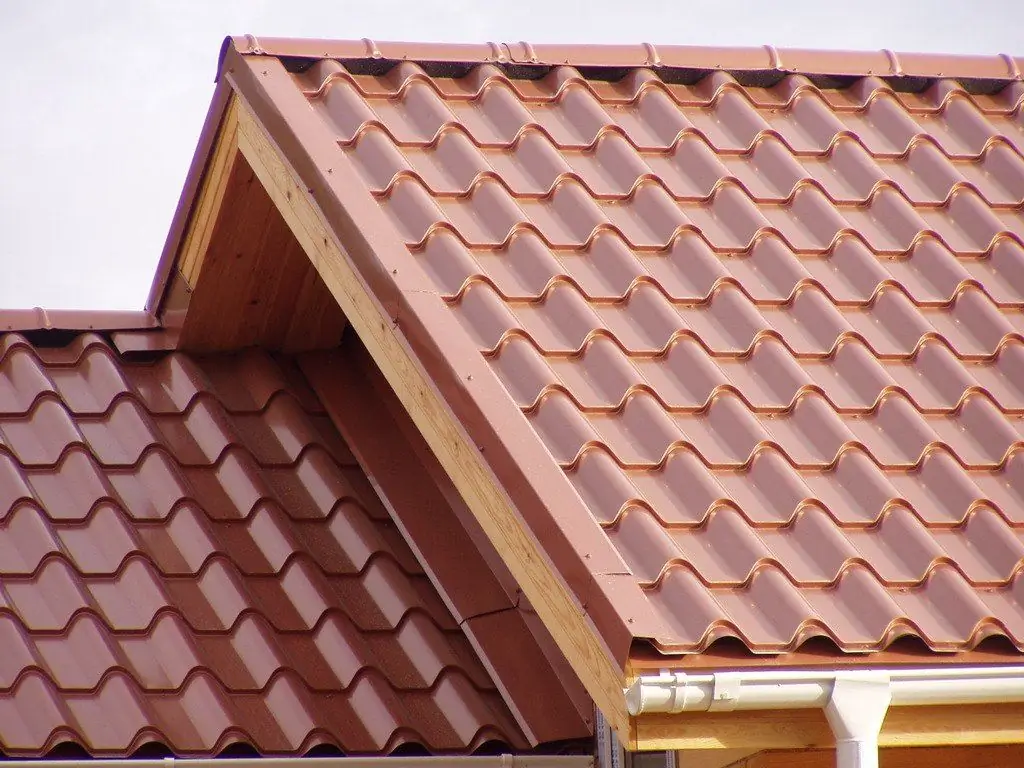
Methods and materials for the repair of metal roofing. What tool is needed and step-by-step instructions for eliminating roof breakages
Repair Of A Soft Roof, Including A Description Of Its Main Stages, As Well As Material And Tools For Work
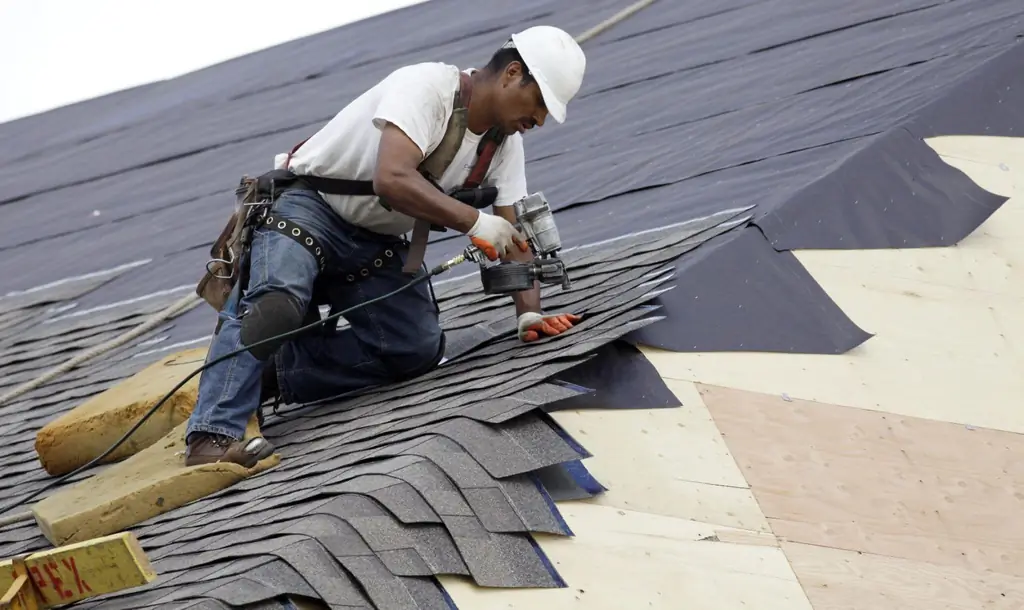
Diagnostics of the condition of the soft roof. Repair types and their main features. A brief overview of roofing materials and recommendations for their selection
Flat Roof Repair, Including A Description Of Its Main Stages, As Well As Material And Tools For Work
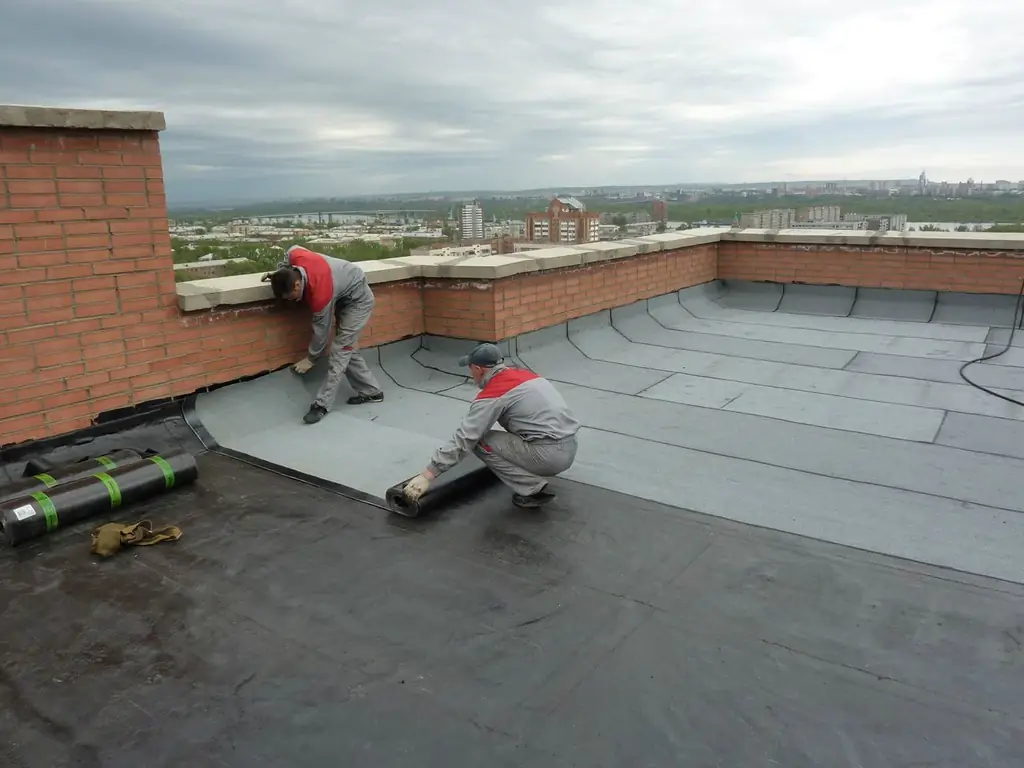
A brief description of the types of flat roof repair. Recommendations for the selection of roofing materials. Technology for eliminating various defects on flat roofs
Rolled Roof Repair, Including A Description Of Its Main Stages, As Well As Material And Tools For Work
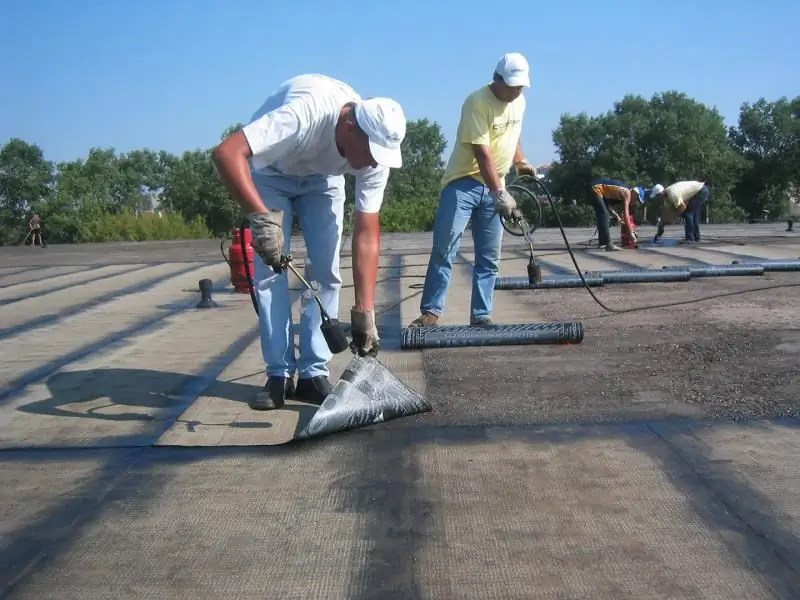
The main types of repair work. Preparation for work and general safety precautions. Step-by-step instructions for performing major and current repairs
Repair Of The Overlaid Roof, Including A Description Of The Technology And Main Stages
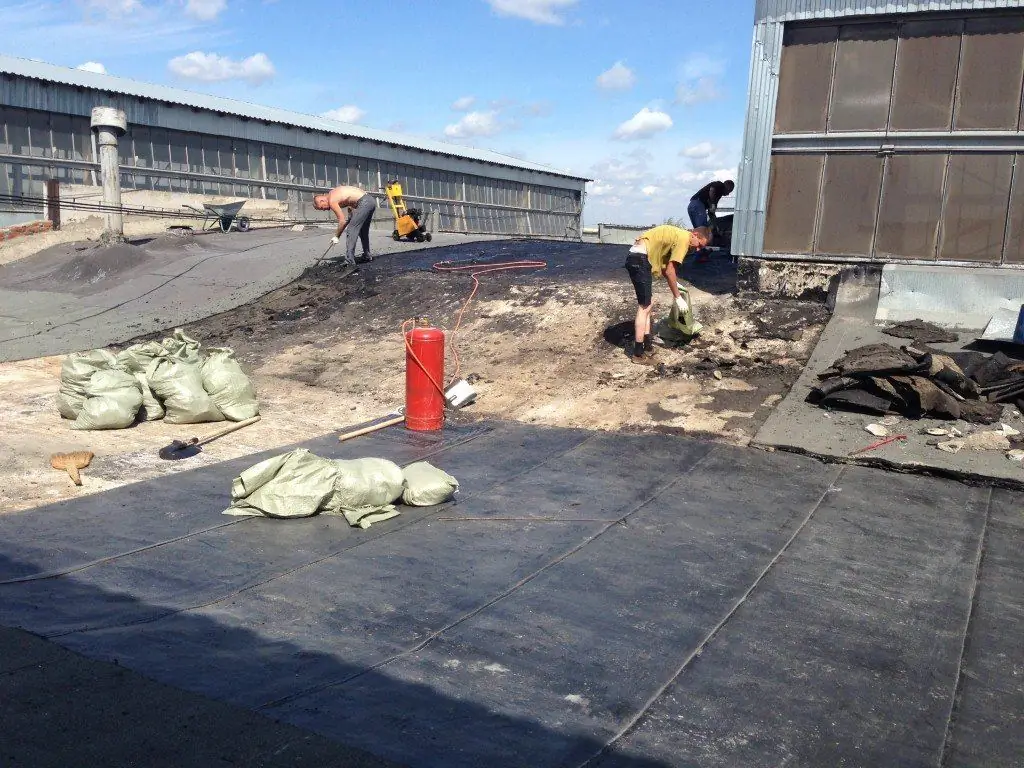
What defects arise during the operation of the deposited roof, the reasons for their occurrence and how to eliminate them. Repair of a roof made of deposited materials
